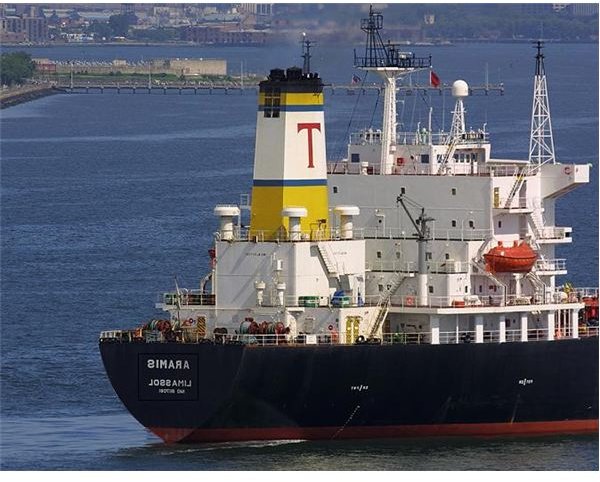Lifeline of the Ship: Diesel Marine Engines and Other Engine Room Machinery Explored
The word “room” normally brings forth the image of a small or average sized room used for domestic purposes. If I mention the word “engine room,” the best you might imagine could be a compartment with a small engine placed at the corner. But remember we are talking in the context of ships and everything related to them is huge in size. So when I talk about the “engine room,” I am not referring to any small room or compartment, but a space which is several stories high and many times bigger than an average sized house. So let us begin this journey in the W_onderland_ of the ship engine room and bring out the Alice in ourselves.
The Engine Room
As the name itself suggests, the engine room is the space on the ship where all the machinery is located. Well, almost all the machinery, as there are several items of major equipment that are outside the engine room such as cranes, winches, and so forth. First you need to know where the engine room is located, and for that you need to see the two pictures below.
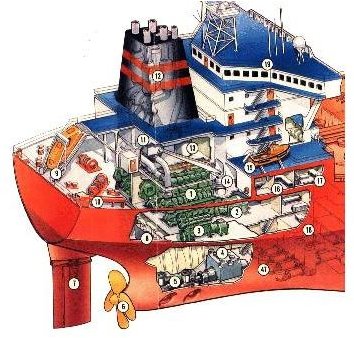
The first image shows the real picture of a ship from its back side (aft) and the adjacent picture shows a cutaway section of the ship from aft through which you can see the relation the engine room has to the rest of a real ship.
As you can see, the engine room extends right from the bottommost level to the level of the funnel. The main propulsion plant, or the main marine diesel engine that drives the propeller, is located at the bottom but is several stories high. The next picture shows a human being standing near one of the cylinders of the marine engine and this will give you an idea about its size.
Engine Room Images

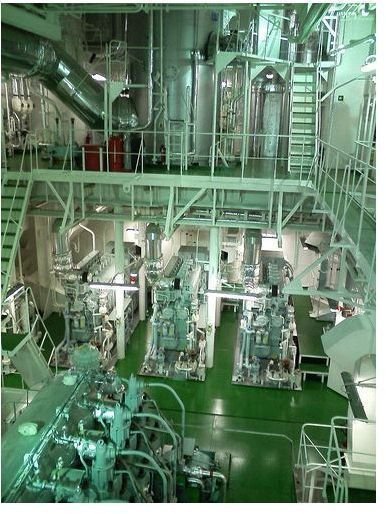
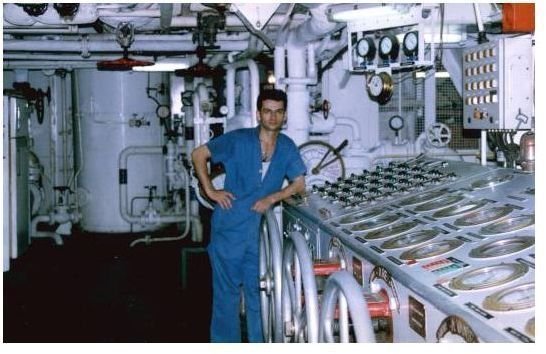
Location on Ship
There is no hard and fast rules regarding the location of each item of equipment, but normally the engine room consists of several levels having different machinery such as auxiliary engines or diesel generators, a boiler, the inert gas plant, fresh water generator, and purifiers, fuel and oil pumps and storage tanks, the engine control room, waste incinerator, and several other common paraphernalia like electrical panels at various levels.
The engine control room is the command center of the engine room and is usually the only air-conditioned place within the engine room, which is otherwise full of noise and heat. This is because of the presence of computers and delicate controls. Of course, it also depends on the area in which the ship is sailing. In very cold regions, the engine room is cold rather than hot.
I must also add here that apart from the location of the machinery, the location of the engine room itself isn’t fixed for all types of ships. Most ships have engine room at the aft, while there are other variations in which it is located either midships or at the front side of the ship.
Control Room Pictures
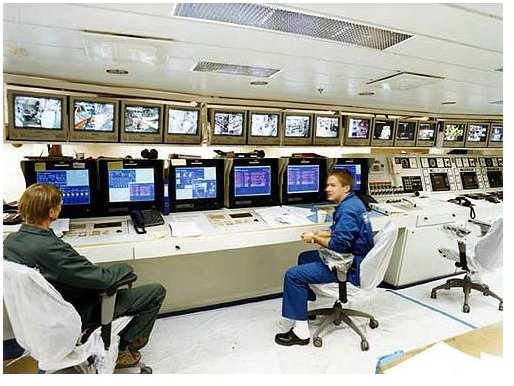
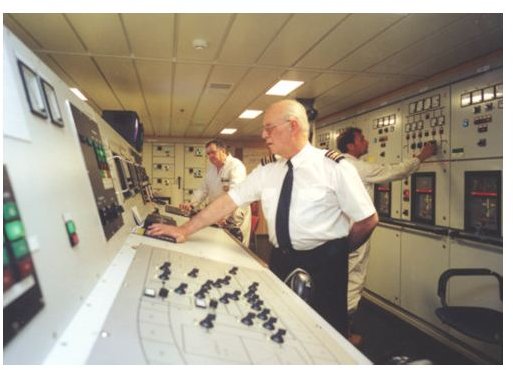
Safety and Manning
You are always supposed to wear safety gear when entering the engine room, which is through an air tight door. Inside that door you come to a changing room where you remove your normal shoes and put on accessories such as boiler suit, safety shoes, safety helmet, gloves, and ear-muffs. A positive pressure is maintained inside the engine room most of the time by running the engine room blowers.
The engine room can either be manned or unmanned, which basically means that either there are duty engineer and crew present 24 hours a day in the engine room (typically on a 4-on-4-off duty roster) or else it’s handled much like a 9-to-5 type of office job. The actual mode depends on the type of ship, the level of automation, and certain navigating conditions such as navigation in restricted waters and so on.
When any watch-keeper enters the engine room, he is typically advised to follow a “funnel to tunnel” path where he starts inspecting the top most sections of the room and ends at the bottom most level. This helps to detect any leaks, abnormal noises, and other faults which may not be detected by the alarms and monitors installed on modern ships.
References
- Engine Room Sketch
- Engineer on Duty
- Control Room Work
- Author’s experience and expertise
- Engine Control Room
